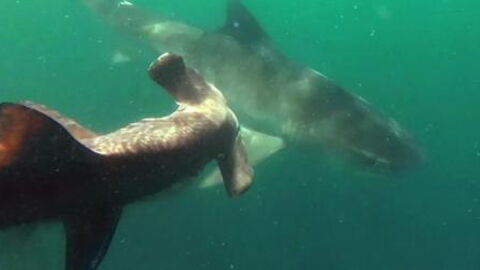Italian scientists recently made a very mysterious discovery. In a study that was published in July 2019, they revealed that in the south of Sardinia, they found a specimen of a shark known as Galeus melastomus, also known as a Blackmouth catshark, but with no skin or teeth. This specimen, which was captured at a depth of 500 meters under the ocean, may, in fact, be a new species…
Discover our latest podcast
Generally, the Blackmouth catshark is found in the eastern Atlantic between Norway and Senegal as well as in the Mediterranean. The shark is practically worthless and has no commercial value. But when this particular shark in question was lifted out of the water, scientists realised it was very different.
‘Since the specimen was so strange, at first we checked for a possible report of a new species for the Mediterranean, but it was clear that this was not the case,’ they explained. The specimen they discovered measured 30.2 centimetres long and weighed 82.7 grams.
An exceptional survival
The first question that then arose was: how did it survive? Skin is a key element for sharks since it contains dermal denticles that reduce the shark's friction with water and allows them to swim better. Also, their epidermis secretes mucus which also helps protect them from infections.
Although the lack of skin must have changed the way that the shark moved, the scientists found that it was capable of feeding just like any Blackmouth catshark.
Our observations lead to think that this abnormal condition did not totally compromise either the swimming skills or the functionality of sensory structures like the ampullary pores. The lack of teeth did not influence the feeding abilities, probably because the Blackmouth catshark ingests its prey whole.
As a result, scientists have many questions…
‘Was this malformation ‘natural' or was it induced by some teratogenic factor like ocean acidification, temperature rise or pollution? It is very difficult to answer but considering that [other] malformations in sharks are being reported more frequently, it is very interesting (and important) to investigate,’ said the team of researchers. For now, the mystery remains, but we should hopefully have some answers very soon!















